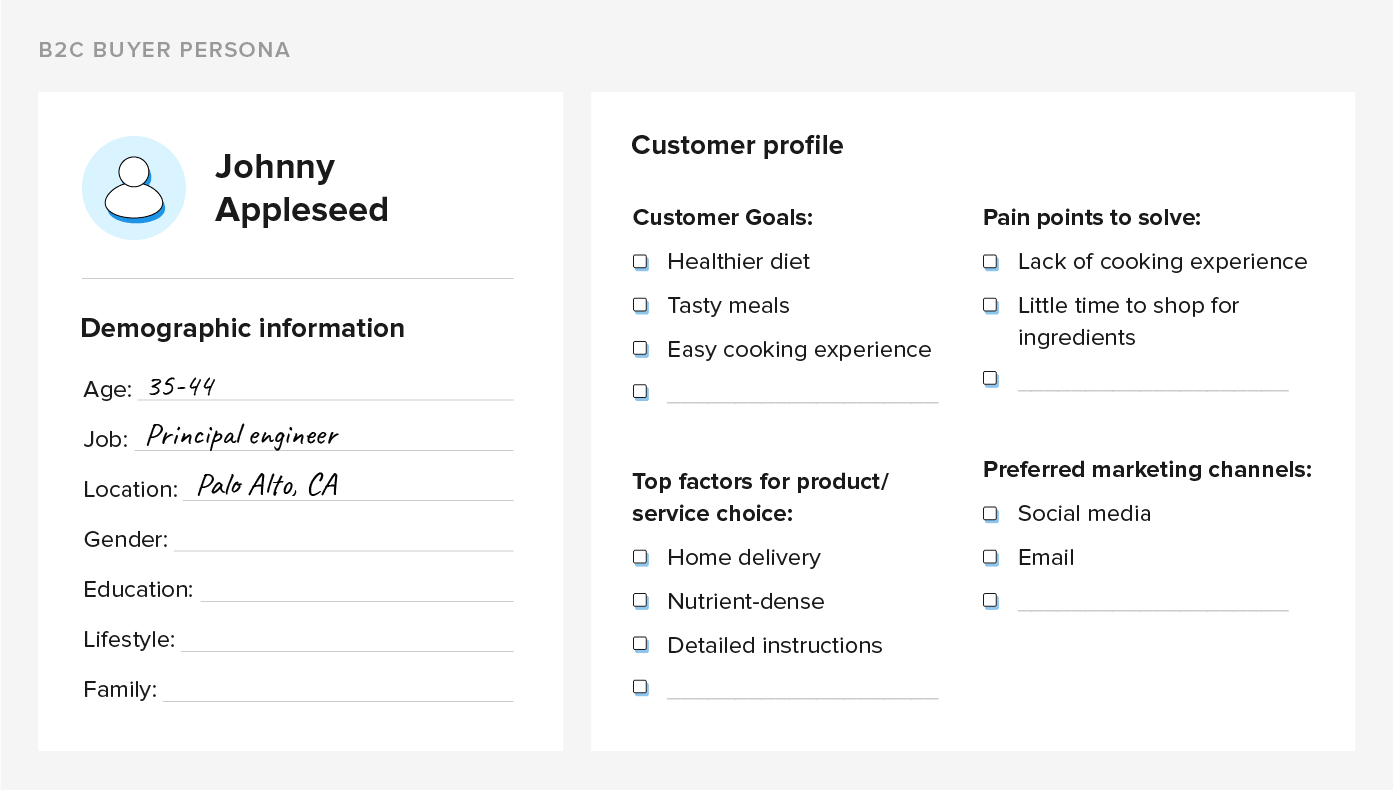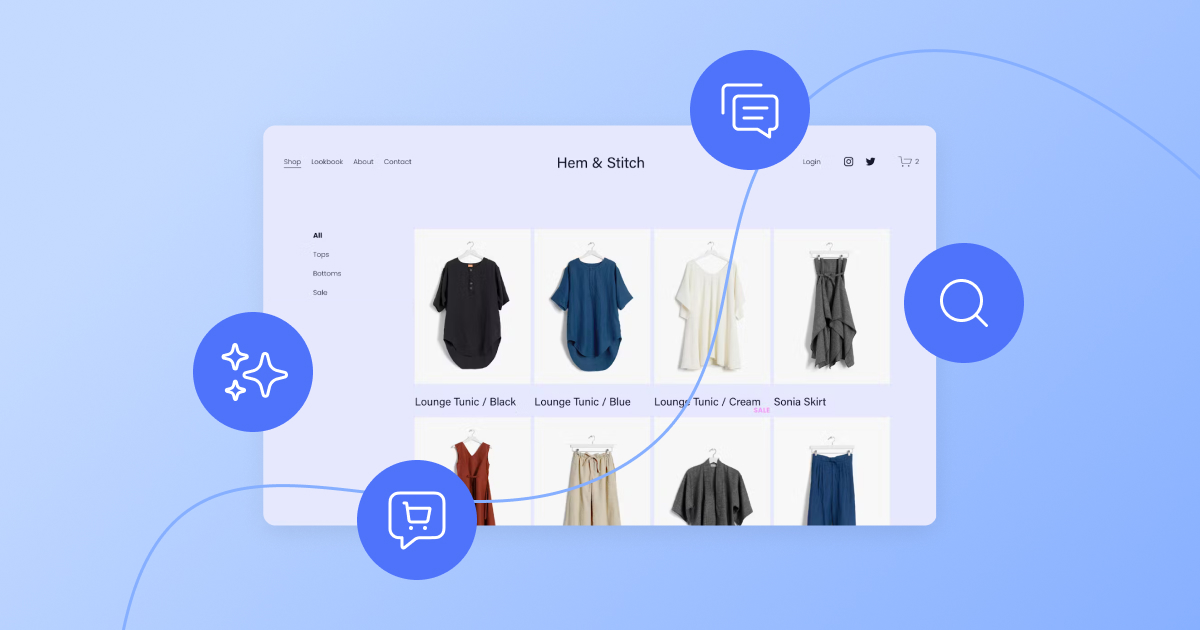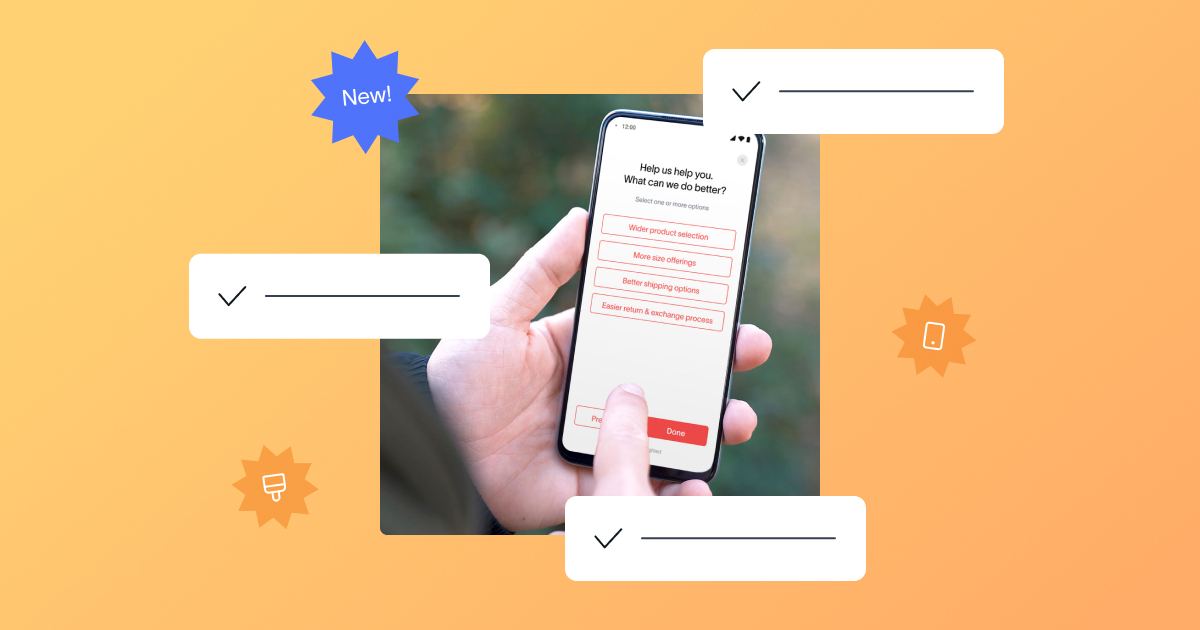Offering a highly targeted customer experience is much easier when you create buyer personas that reflect your target customers. Learn more in our best practice guide below, with tips on what to include in your buyer personas and how to use them to better your business.
In this post, we’ll cover:
- What is a buyer persona?
- Why are buyer personas important?
- What are the benefits of creating buyer personas?
- What does a buyer persona include?
- Types of buyer personas
- How to create a buyer persona in 3 steps
What is a buyer persona?
A buyer persona is a fictional representation of your ideal customer. Buyer or customer personas capture traits of existing customers to serve as a blueprint for strategizing your marketing efforts. Based on market research and customer data, personas help you understand your customers’ needs and how you can meet them.
Your buyer personas can help you identify the expectations of your target markets and the key strategy to focus on to improve marketing, sales, and overall customer experience.
Whether you call them buyer, customer, or marketing personas, they all have the same objective: identifying key traits of loyal customers to help effectively target new potential customers.
Why are buyer personas important?
Buyer personas are an important part of customer journey mapping, as they help you determine how a certain type of person might travel through your customer experience touchpoints.
Without having a clear idea of who you’re creating your products, marketing, and customer experiences for, your customer journey might be less effective – making it harder to reach your goals.
Your aim is to nurture your ideal customer to a sale or a signup – and if your journey isn’t what your potential customers are expecting or looking for, chances are they’ll go elsewhere. With a fully fleshed-out marketing persona, you can answer the following questions:
- What is my potential customer looking for, and what do they expect from my customer experience, products and services?
- What problems are we solving for them?
- What would convince this customer to buy from us?
- What would make this customer choose us over our competitors?
What are the benefits of creating buyer personas?
It’s much easier to design products and create digital marketing or customer experience strategies when you have an example customer in mind.
Rather than guessing or just offering what you think will work, you’re better able to plan your approach to various customer segments and bring your marketing strategy to fruition.
There are several benefits to creating a customer persona:
More focused products and services
Your buyer personas highlight the reasons why your customers are looking for a product, and what they expect to find. Your product development will become more focused when you’ve aligned your designs to your buyer personas and the solutions they’re looking for.
More targeted marketing
If you know what your potential customers value and are seeking from your product or service, you’re successfully able to attract them with your marketing campaigns.
Your content marketing and social media outreach are easier to personalize to your customers when you’ve collated their information into a buyer persona. Rather than aiming for a generic target audience, you can customize marketing messages for specific types of customers based on their demographic and channels of choice.
Tailored customer experience
Your customers have preferences for the channels they use, the way they solve problems, and how they prefer to contact you. They also have likes and dislikes when it comes to purchasing processes, such as how they prefer to browse products or pay.
When you’ve narrowed down your customers’ preferences and created a buyer persona, you’re more easily able to create a customer experience and journey that feels tailored to individual consumers or specific business customers. Even though you’re targeting a whole segment, your single-persona approach will feel more authentic to your customer.
Better problem-solving and lead generation
With a buyer persona, your customer service teams will have a deeper understanding of your customers’ background and pain points. Their handling of issues will be backed by the information you can provide on the types of problems customers encounter, and the way customers prefer things to be resolved.
Not only that, but your sales teams will have an easier time creating leads, as they’ll know how to approach potential customer problems and offer solutions via your products and services.
What does a buyer persona include?
A great buyer persona has a lot of information about the kind of customer you’re aiming to attract with your products and services. To build out a thorough persona, you’ll need to source the following information:
- Your target demographics, such as age, job title, and ability to make purchase decisions
- Your customer’s location
- Their goals, such as product purchase, profit, or business growth
- Their top factors for choosing a provider of products and services
- Providers or brands they might already buy from
- Their main problems or pain points
- Their basic needs, such as a product that solves a particular problem
- Which channels they prefer, such as email, social media, face-to-face contact, chatbots, etc.
With this data, you can create a buyer persona that feels authentic to a real customer and their needs.
Types of buyer personas
While the types of buyer personas could be limitless, we narrowed it down to two types: B2B and B2C. B2B personas focus on the needs and wants of businesses, whereas B2C personas should focus on the types of customers you want to market to.
B2B buyer persona example

The example above outlines a buyer persona template for an employee at a company looking for new software. The specific goals and pain points will vary depending on the role of the persona within the company, but overall, B2B personas focus more on aspects of business strategy and how to maintain operational efficiency.
B2C buyer persona example

On the other hand, B2C personas outline the priorities of an individual as opposed to a business. The above example of a buyer persona for a meal kit delivery service focuses on what the individual customer needs, which would help a consumer-facing business understand how to make their product or service the most appealing to those customers.
Now that we’ve outlined the two overarching types of buyer personas, you’re ready to start creating them.
How to create a buyer persona in 3 steps
The following steps will help you to create a thorough buyer persona, whether you’re a small business or a growing organization.
1. Study your current customers and ask the right questions
Knowing your current customer can help you target potential new customers with similar wants and needs in a product or service. As mentioned earlier, you’ll need to collect crucial data from your current customers like their age, job title, location, purchasing power, and pain points. Think of this exercise as creating the resume of your ideal customer, which ultimately helps you market to them.
Here are some examples of questions to ask your current customers in an interview on the phone, in person, or through a survey.
- What is your profession? What are your responsibilities on a day-to-day basis?
- What are your biggest challenges when it comes to [product/service]?
- What is your preferred method of communication with vendors? Email, social media, etc.
- What industry does your company operate in? What size is your company?
Check out this Qualtrics blog post for more ideas on what questions to ask customers for B2B buyer personas.
2. Categorize your ideal customers into different segments
With enough data from current customers, you’ll start to notice patterns in their goals, location, age, or even their profession. Segmenting your audience by a trait of your choice can help you create multiple personas if you need to.
For example, you might want to create different personas for different age ranges because younger customers may prefer to be contacted via text, while older customers may prefer email.
How many personas you end up creating can very well depend on the different types of customers you want to market to, especially if you have multiple product lines. If you’re struggling to decide which personas to focus on, start with 1-3 customer profiles that represent your largest revenue sources.
3. Create your buyer personas
With the data you’ve collated neatly divided into customer segments, begin to create a fictional persona that will represent the buyers from that group.
Your buyer persona should feel as real as possible. If it helps, you can add a name, images, quotes, and more to make this “person” easier to imagine.
With the level of detail you’ve gathered, your buyer persona’s motivations, needs, and goals should be clear and easy to understand.
Be sure to share your buyer personas with different departments so they’re familiar with who they are marketing to, and to align the entire business strategy.
TIP: Remember that though B2C customers might be easy to translate into a buyer persona, your B2B clients might not be. With multiple stakeholders and more complex requirements, you may need multiple buyer personas to help you meet their needs.
From creating your buyer persona to mapping a customer journey, Delighted surveys make it easy to understand your audiences and perfect their experiences at every stage of the customer lifecycle. Sign up to dive deeper into Delighted today at no cost to you!







